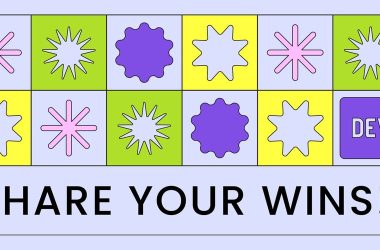[July] ML Community — Highlights and Achievements
Let’s explore highlights and accomplishments of the vast Google Machine Learning communities over the month. We appreciate all the activities and commitment by the community members. Without further ado, here are the key highlights!
Featured Story: Tutorials with Colab Notebooks
Videos
https://medium.com/media/9d0b6197276adb975c3ab7ff18532886/href
How to save money with Gemini Context Caching (Colab Notebook) by AI/ML GDE Sam Witteveen (Singapore) explains how to get your Gemini calls to cost less and be faster for many people.
Gemini Explorations — Live Local (Colab Notebook) by AI/ML GDE Vikram Tiwari (US) explains how to start using Gemma for your local only workflows with Gemma 2 9b on Colab and AI Studio. His another video, Gemini Explorations — Context Caching (Colab Notebook) introduces a new feature of Gemini API, context caching and explains steps to use it.
https://medium.com/media/46cba61148f6991b2287ad934afd1282/href
Ultimate Guide: Professional Use of Google Gemini API (Spanish) (Colab Notebook) by AI/ML GDE Carlos Alarcon (Colombia) is a step-by-step guide to learn how to use the Google AI Studio API to interact with Gemini 1.5 Pro. It walks you through the process of getting your API key, setting up your development environment, and performing inferences with different language models.
Exploring Gemini 1.5 Pro and Flash through Hands-on Applications (Arabic) (Colab Notebook | blog post) by AI/ML GDE Ruqiya Bin Safi (Saudi Arabia) was a workshop exploring the features of Gemini 1.5 Pro and Flash and how they differ from each other. She showed a comparison between the models and demonstrated their performance by building an app.
Masked Modeling for Self-Supervised Learning (Colab Notebook | Slides) by AI/ML GDE Taha Bouhsine (US) explained how ML engineers create foundational ML models that can be fine-tuned for specific tasks. He also created a simple implementation for Masked Autoencoder (MAE) using JAX/Flax and TF datasets.
Blog posts
Vertex AI Context Caching with Gemini
Vertex AI Context Caching with Gemini (Colab Notebook) by AI/ML GDE Sascha Heyer (Germany) explains how to use caching to make your Gemini input up to 4 times cheaper. His another video Vertex AI Controlled Generation with Gemini (Colab Notebook) shows how to leverage Gemini API’s capabilities to control the model output to a specific format such as JSON and more, including custom formats.
Extending Gemma’s Tokenizer for New Languages (Colab Notebook) by AI/ML GDE Rishiraj Acharya (India) explores why proper tokenizer extension is crucial for supporting new languages in LLMs, and walks through a Python script that demonstrates how to correctly extend Gemma’s tokenizer for a new language.
Build a RAG Application Using Gemma 2 (Part 1) (Colab Notebook) by AI/ML GDE Ruqiya Bin Safi (Saudi Arabia) explores two options, RAG or fine-tuning a model. She specifically covers handling Arabic data from Wikipedia. Throughout the tutorial, she focuses on utilizing Gemma 2 Instruct and an open-source embeddings model. She shows how to leverage the LangChain framework to streamline the process of building the RAG and fine-tuning the model.
Kolmogorov-Arnold Networks: a Critique
Kolmogorov-Arnold Networks: a Critique (Colab Notebook) by AI/ML GDE Rubens Zimbres (Brazil) presents KANs mathematical theory, usefulness and a basic flaw. In this experiment, KANs fitted the pure random data in the features to the labels provided, with an extremely high accuracy. This article got 360+ Claps on Medium.
Highlights by products
Gemini
https://medium.com/media/2f87a75af9e89587280c2617d7fab25c/href
Gemini Nano locally in Chrome — test it out today! by AI/ML GDE Tomasz Porozynski (Poland) guides you through the steps to setup and use Gemini Nano locally in the Chrome browser.
LangChain.js and Gemini: Getting Started by AI/ML GDE Allen Firstenberg (US) compares the two platforms to run Gemini, the AI Studio API and Vertex AI. He walks you through the different methods available, when to best use each, and how.
Implementing a Multimodal Solution with Gemini-1.5-Flash and Streamlit (Portuguese) by AI/ML GDE Rubens Zimbres (Brazil) presented the steps to implement a multimodal solution with Gemini-1.5-Flash and Streamlit, presenting technical aspects of the LLM and code to deploy the solution in Cloud Run.
The Software Development Lifecycle in the IA Era by AI/ML GDE Santiago Carrillo (Colombia) discussed how LLMs such as Gemini can be used to support the first four phases of the software development lifecycle: analysis, design, implementation and testing. The example app built was a task planner, and practical examples were shown of how Gemini can support the process of building an Android app.
CI/CD Meets Gemini: Elevating Code Quality with Smart Refactoring by AI/ML GDE Tomasz Porozynski (Poland) discussed how to enhance code quality by incorporating Gemini into your CI/CD workflows with platforms like GitHub Actions, GitLab CI/CD, and Google Cloud Build.

Tfug Surat Gen AI meetup by TFUG Surat (India) hosted two sessions covering how to leverage GKE’s scalability, automation, and security features to deploy and manage Gemma efficiently (by Ashutosh Bhakare) and how to build an app with Flutter and Gemini (by Bhavik Makwana).
Google’s Language Model Ecosystem: Gemini, Gemma and Open Models (at Innovators Hive ’24 Seoul) by AI/ML GDE Jeongkyu Shin (Korea) explored the distinct characteristics of Gemini and Gemma through a comparative analysis. He examined powerful features of each model, such as Gemini’s large context window and Gemma’s flexible fine-tuning capabilities. He showcased real-world applications where these models have been successfully implemented.
Cryptic Checking Systems (slides) by AI/ML GDE Martin Andrews (Singapore) covered his research about solving challenging cognitive tasks, cryptic crossword clues using Gemini.
Gemma

Book Buddy: Interactive Storytelling using a Gemma-based RAG (repository) by AI/ML GDE Jigyasa Grover (US) is an AI companion can respond to queries from the storylines and provide detailed explanations on demand. It leads you to delve into the capabilities of Gemma-based RAG for interactive storytelling through a tutorial creating a dynamic system capable of answering questions about the text “Alice’s Adventures in Wonderland”.
How to use Gemma for marketing and customer management by AI/ML GDE Jerry Wu (Taiwan) shared about use cases of Gemma in the banking industry. He also talked about deploying Gemma on enterprise servers such as Dell and HP.
Varsity Info Bot — Built with Gemma + Langchain + RAG +HF by Usha Rengaraju (India) focused on Gemma, augmented with additional capabilities drawn from the RAG framework. She also talked about how to leverage tools such as the Hugging Face transformers library, LangChain, and the Faiss vector database, and etc.
Vision Tasks with Gemini-Flash and PaliGemma by AI/ML GDE Martin Andrews (Singapore) introduced Gemini Flash and PaliGemma and gave demos of both discussing their relative advantages and disadvantages.
https://medium.com/media/71b487024e8139bc93a079e66885d18e/href
Gemma 2 — Google’s New 9B and 27B Open Weights Models by AI/ML GDE Sam Witteveen (Singapore) introduced the new Gemma model in 2 sizes and how to get started using them.
Gemma 2: Best Open LLM Model yet? Try It Yourself! by AI/ML GDE Tomasz Porozynski (Poland) explores Gemma 2 in topics such as how Gemma 2 compares to other AI models, its capabilities in solving puzzles, generating Python code and rephrasing complex topics, and how Gemma 2 handles various languages.
Build with Gemma: Session 1 & 2 by TFUG Jaipur (India) was organized in collaboration with Galgotia University, India. Those events covered how to extract information from textbooks using Gemma and how to build a Q&A system with Gemma and RAG.
Keras
Announcing New Hugging Face and Keras NLP integration
Announcing New Hugging Face and Keras NLP integration by AI/ML GDE Aritra Roy Gosthipaty (India) introduces the recent integration between Keras NLP and Hugging Face. He also contributed to KerasNLP by porting PaliGemma transformers checkpoint and Gemma 2 transformers checkpoint.
Unlocking the Gemma LLM Capabilities using Keras NLP by AI/ML GDE Joan Santoso (Indonesia) discussed how to use Gemma in various chatbot use cases using KerasNLP. He also led a workshop, JAX and Keras NLP for Exploring Gemma LLM to efficiently train, fine-tune, and deploy Gemma for various natural language processing tasks.
JAX

JAX and FLAX for Machine Learning Development by AI/ML GDE Joan Santoso (Indonesia) introduced JAX/Flax for ML model development. He discussed how JAX provides a NumPy-like interface with high-performance capabilities for differentiation, vectorization, and compilation to GPUs and TPUs. He also discussed how Flax provides a flexible neural network library designed for research. He emphasizes its speed and efficiency, allowing researchers to experiment rapidly with different model architectures and training techniques.
Adding Normalize by Update Norm to Optax by AI/ML GDE Saurav Maheshkar (UK) was a PR to add a new GradientTransformation which allows normalization by the gradient norm and merged.
ODML

In-Browser Inference with a Customized Tensorflow Lite Model and MediaPipe (live app) by AI/ML GDE Rubens Zimbres (Brazil) is about how he developed an app for image classification using TF Lite and Javascript. He used a PyTorch model instead of the default and supported model EfficientNet. The JS code loads the quantized .tflite model in the browser from a remote repo. This solution allows anyone to train any customized model in Tensorflow/PyTorch, convert to .tflite and deploy in the web browser.
LLM / Gen AI
Google DeepMind: Pioneering Mathematical AI with AlphaProof and AlphaGeometry 2 Achieving…
Google DeepMind Pioneering Mathematical AI with AlphaProof and AlphaGeometry 2 by AI/ML GDE Konstantinos Kechagias (Greece) explores how the two cutting-edge AI systems achieved a silver medalist level at the International Mathematical Olympiad, marking a significant advancement in artificial intelligence and formal mathematical reasoning.
Mesop — Google’s New UI Maker by AI/ML GDE Sam Witteveen (Singapore) introduces a Python UI framework, Mesop, to build a UI for your LLM app quickly and test it yourself.
Cloud

Taking a walk in the Model Garden by AI/ML GDE Suvaditya Mukherjee (US) was a lightning talk around a general introduction to Gen AI and Vertex AI Model Garden for production use-cases at Google I/O Connect Bengaluru.
AICamp Gemini and TPU training by AI/ML GDE David Cardozo (Canada) walked through practical examples of building TPU training pipelines using Kubeflow and Vertex AI.
How to Address GPU Allocation Error on Google Cloud Platform by AI/ML GDE Roya Kandalan (US) is about managing and adjusting Compute Engine quotas for people who have problems with GPU resources.
https://medium.com/media/e724e20e91ff03b629524b086a224209/href
Generative AI Orchestration — Episode 1 (blog post | repository) by AI/ML GDE Sascha Heyer (Germany) was a live stream guiding how to orchestrate Gen AI apps using Cloud Workflows. He provided written content as well as a repository for people who want to try it out themselves.
Retrieval Augmented Generation (RAG) with Vertex AI and Langchain by AI/ML GDE Olayinka Peter Oluwafemi (Nigeria) talks about the concept of RAG and how RAG, powered by Vertex AI and other tools like Langchain, represents a significant advancement in AI-driven text generation.
TensorFlow
Improved Skin Disease Detection with Tensorflow by AI/ML GDE Kushal Pokhrel (Australia) was a talk about his project, which he accomplished as a contribution to the Cybernetics and Systems chapter in the Taylor & Francis journal. He discussed the impact of various skin conditions, from severe issues like melanoma to less serious ones like acne and covered how he used TensorFlow and other tools to achieve improved accuracy in skin disease detection. This talk provided an overview of his research methodology and its potential to enhance global health.
ML Ecosystem

TFUG Ghaziabad hosted a series of ML Math Clubs exploring key mathematical concepts such as linear algebra, calculus, probability, and statistics, all tailored to their applications in ML. The campaign was hosted for 9 days straight with 250 participants on average.
Machine Learning, AI, Deep Learning & NLP Community — Bangladesh hosted various basic sessions covering math, basic concepts in ML, and frameworks such as Pandas, scikit-learn, Seaborn etc. This group has hosted a variety of events especially for beginners to help them hone their skills and knowledge.
[July] ML Community — Highlights and Achievements was originally published in Google Developer Experts on Medium, where people are continuing the conversation by highlighting and responding to this story.
![[july]-ml-community — highlights-and-achievements](https://prodsens.live/wp-content/uploads/2024/08/26700-july-ml-community-highlights-and-achievements-550x328.jpg)




